- Group Exhibition »To Light, Shadow and Dust« Berlin, 2022
- »Transitions« Berlin, 2020
- »New Works« Stockholm, 2019
- »Twelve Thirty« Berlin, 2015
- Group Exhibition »GATHERED FATES curated by Ignasi Aballí« Berlin, 2015
- »Twelve Thirty« Stockholm, 2014
- »Sirous Namazi« Stockholm, 2012
- Group Exhibition »Umstülpung - curated by Günter Umberg« Berlin, 2012
- »Sirous Namazi« Berlin, 2009
- »Sirous Namazi« Stockholm, 2008
- Group Exhibition »Drawing a Tiger« Berlin, 2007
- Group Exhibition »Group exhibition« Berlin, 2006
- Group Exhibition »Alice Doesn't Live Here Anymore« Stockholm, 2006
- »Sirous Namazi« Berlin, 2005
- Group Exhibition »Pale Fire« Berlin, 2003
- cv-scr-2023.pdf
-
Gertrud Sandqvist: Reconstruction, Twelve Thirty, Sirous Namazi, Research and Development, 2014
-
Ronald Jones: Sirous Namazi at Galerie Nordenhake Stockholm, Frieze, Sept 2012
-
Ann-Sofi Noring: Ann-Sofi Noring on Sirous Namazi – On the Periphery, The Nordic Pavilion, La Biennale di Venezia, 2007
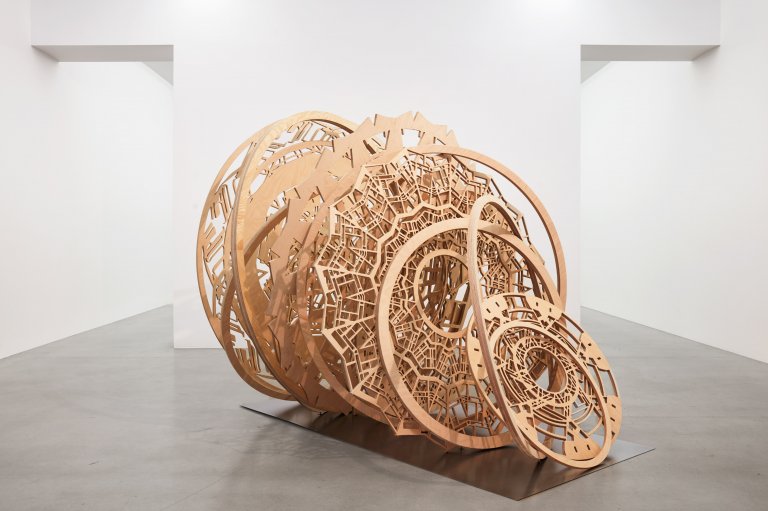
Metropolis, 2019, birch plywood, 172 x 172 x 200 cm
Sirous Namazi »New Works«
Stockholm, May 16, 2019 - June 28, 2019
Early in his career Swedish artist Sirous Namazi gained international attention for his formally rigorous artworks which subtly and often surreptitiously synthesised personal narratives and social critique into their seemingly industrially produced forms. With a focus on sculpture, his works frequently employ the vernacular of Minimalism while using the tradition as a conduit for concerns around modes of urban living, consumerism and alienation.
Whereas his previous body of work, Twelve Thirty, reified physical elements from his childhood home before its plundering and the family’s eventual flight to Europe, this new exhibition explores the interface between the consumer and digital commodification. In this dialectic, the consumer is interchangeable for the viewer and commodities for image production.
In the exhibition Namazi uses strategies recognisable within his wider practice, transforming architectural details into kaleidoscopic, splintered and modulated abstractions. In Metropolis, large-scale perforated patterned disks stand leaning precariously against one another on the gallery floor, like a beautiful ruin of arabesque stencils. Like a still from the 2010 Christopher Nolan movie Inception, an architectural detail appears to mirror and fold in on itself in Mirrored, a dominant wall-mounted sculpture composed of bricks. In contrast, at the miniature scale, the sculpture Tent, rests, fragile and exposed, comprising a matrix of delicate skeletal rods articulated with small branch-like off-shoots. Again, an architectural structure but more akin to a spider’s web.
On a plinth in the final room of the gallery stands Pavilion, a sculpture depicting some sort of procession of semi-recognisable objects in an apparent state of ongoing production. Cheap, ubiquitous polychrome merchandise, scanned and digitalised, is reincarnated as 3D prints in cheap, ubiquitous monochrome material. In a contemporary analogy to Walter Benjamin’s flâneur, confronted by the seductive products in the large store-front windows of Modernity’s urban landscape, we are defenceless facing the unobstructed advance of Namazi’s pixelated products.
..........
On Pavilion
On his famous painting, The Treachery of Images, the Belgian painter René Magritte has written under an image of a pipe, “This is not a pipe”. With this he addresses a fundamental question. He problematises the relationship between image, language and the process that begins when a portrayed reality is reflected in the mind of the viewer. In the new work, Pavilion, by Sirous Namazi, we are confronted with an application of Magritte's enquiry into everyday visual logic.
We live in an age characterised by speed — via the transfer of data, the flow of generated images, all linked to commodification and the transformation of the everyday into an environment for merchandise.
By depicting the process of goods-production with sculptural objects Namazi illustrates a dimension in the product process: an uninterrupted market-orientated output and simultaneous dissolution of physical objects. He makes visible the production process with objects placed in front of our very eyes. Everyday dislocated items have been removed from their environments and put in a pile — a mobile phone, a lamppost, a suitcase, and so forth…
By creating a framework that uses the logic of a window display — though here with the difference that both the glass and the distance to the viewer are removed — the artist invites the audience to ask themselves a question: are these objects actually what they claim to be? If not, what kind of products have occupied our immediate space with their seductive colours?
In some cases, the objects have been splintered into small pieces. They seem to have lost their original meaning. They can't be given a name. They are not recognisable. In other words, in this new work Namazi reveals an everyday in which our way of perceiving and experiencing the world via the things in our environment has been affected by metamorphosis — a profound transformation.
Ali Ardalan
Sirous Namazi was born in 1970 in Kerman, Iran. He lives and works in Stockholm. In 2018 he participated in the Athens Biennale: ANTI, two years earlier (2016) he took part in the third edition of the Kochi-Muziris Biennale and in 2007 he represented Sweden (with Jakob Dahlgren) at the 52nd Venice Biennial in the Nordic Pavilion. He has had solo exhibitions at Lidköpings konsthall and Örebro konsthall (2018), Fundació Joan Miró (Espai 13), Barcelona (2010), Lunds Konsthall (2009) and Moderna Museet, Stockholm (2003). In 2014 he was awared the Gannevik Art Prize and previously the Edstrandska Award in 2012, the Ljunggrenska Konstnärspriset in 2003 and the Carnegie Art Award (Best Emerging Young Artist) in 2006. The Carnegie Art Award exhibition toured extensively internationally. Recently he participated in group exhibitions at Tartu Art Museum, Tallin (2019),Moderna Museet, Stockholm (2017), Magasin III, Stockholm (2015), Museum für Gegenwartskunst, Siegen (2014), Göteborgs Konstmuseum (2011), Musée d’Art Moderne de Saint-Étienne Metropole (2009), among others.
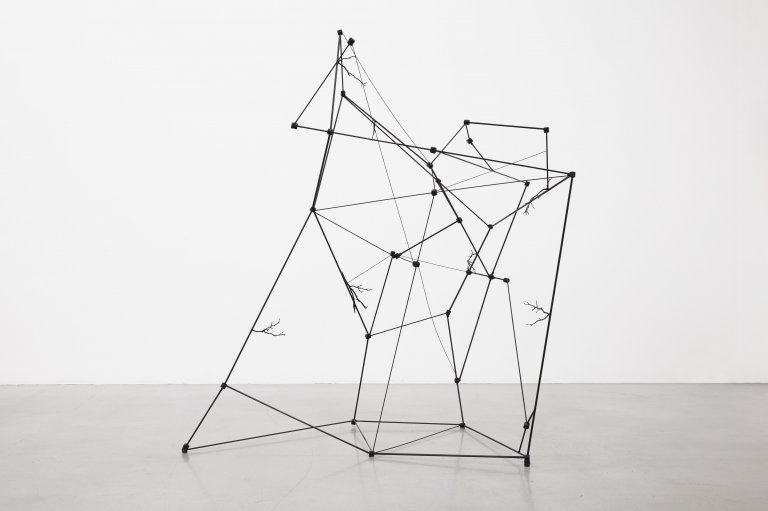
Sketch for a Tent, 2019, carbon fiber rods, 3D print PLA plastic, 155 x 160 x 158 cm
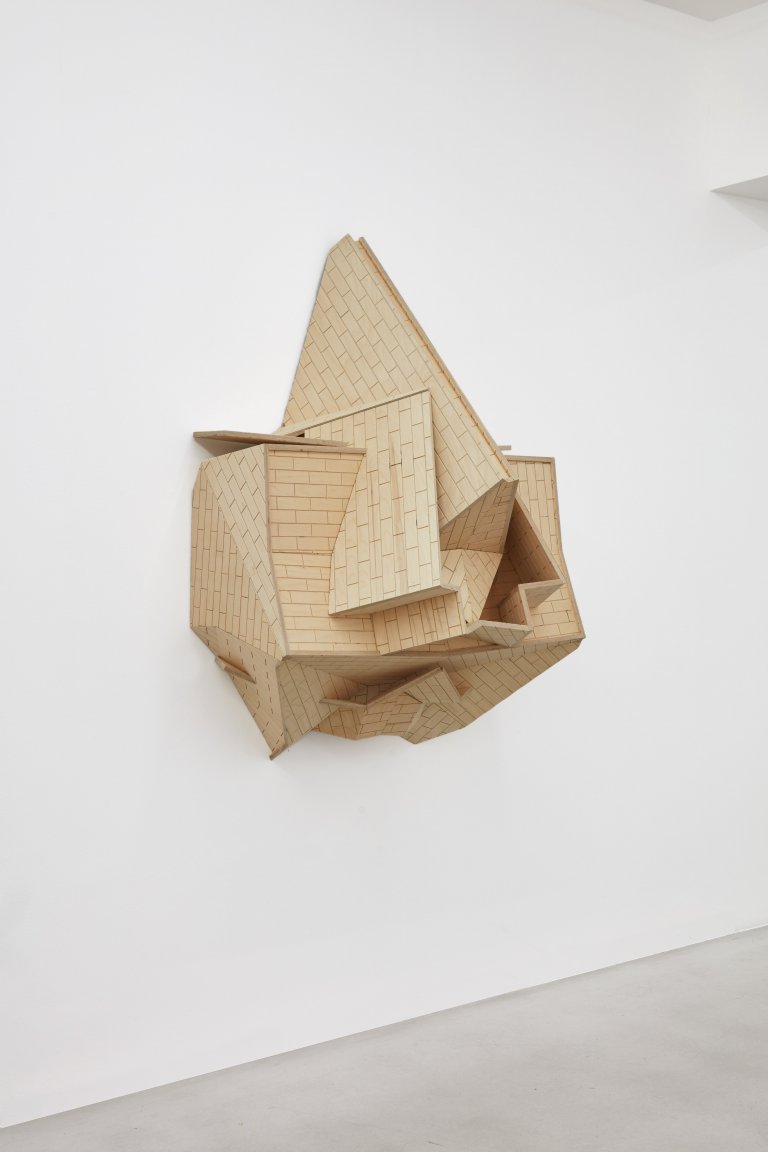
Mirrored, 2019, birch plywood, 150 x 101.5 x 71 cm
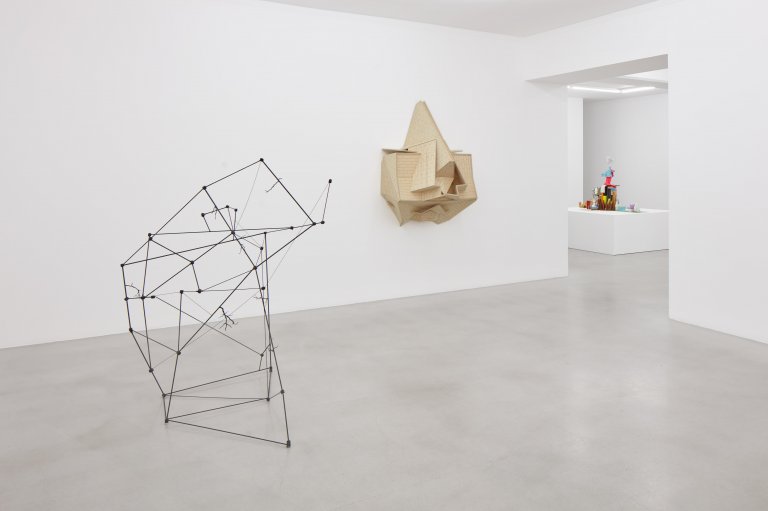
Installation view
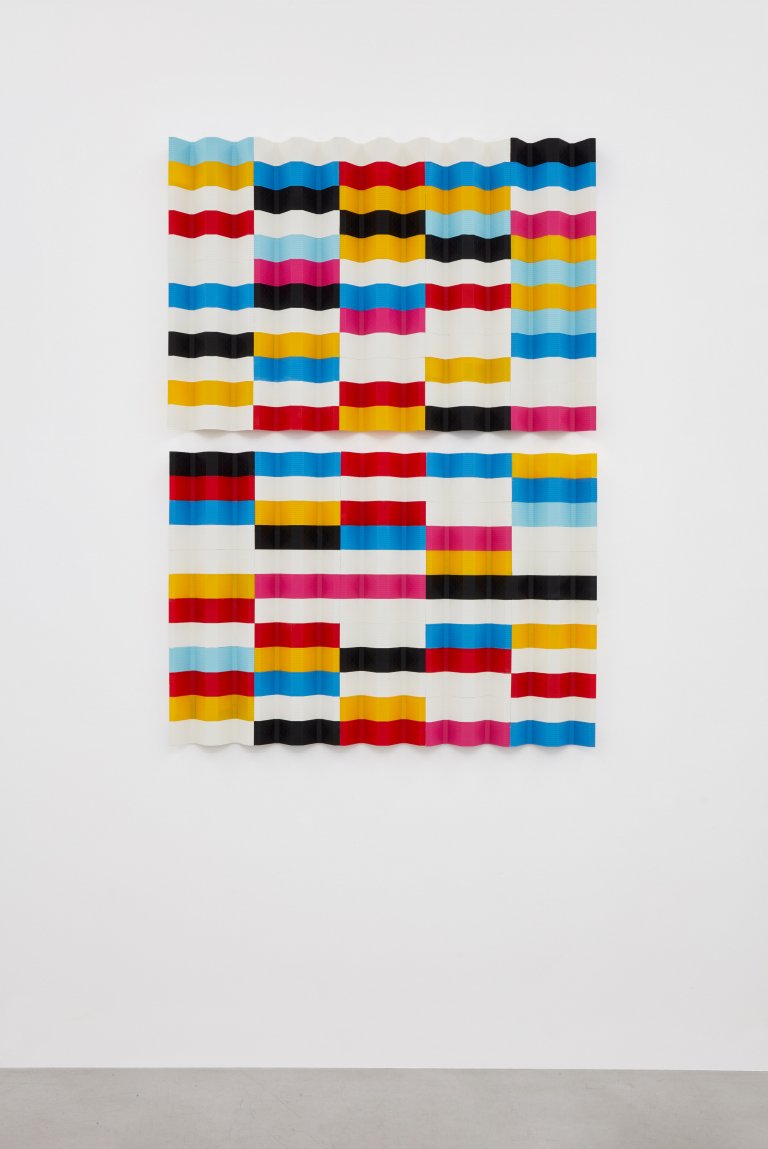
Banner, 2019, 3D print PLA plastic, 2 parts, 70 x 100 x 5 cm each
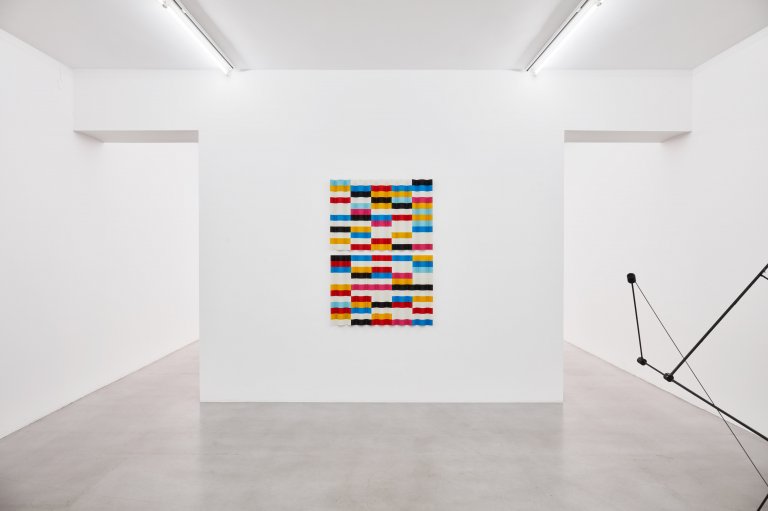
Installation view
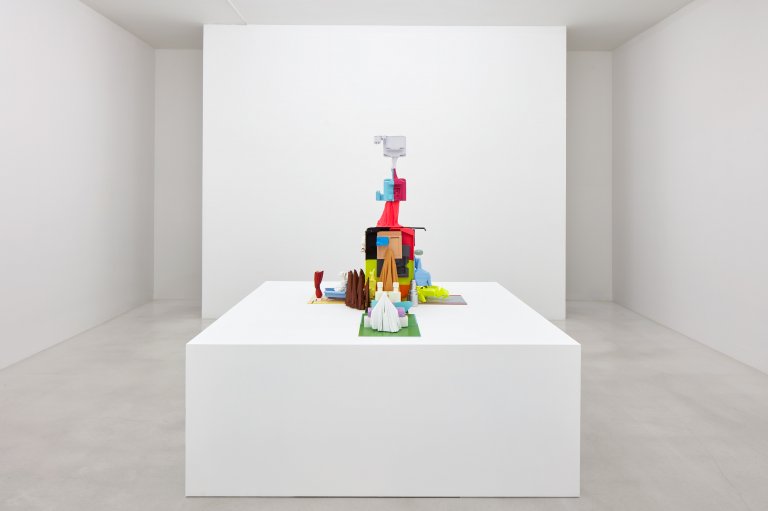
Pavilion, 2019, 3D print PLA plastic, 107 x 109 x 166 cm
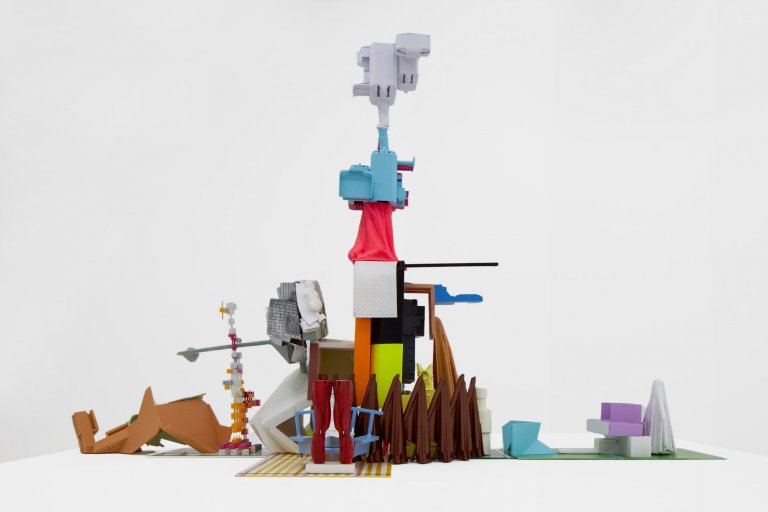
Pavilion, 2019, 3D print PLA plastic, 107 x 109 x 166 cm
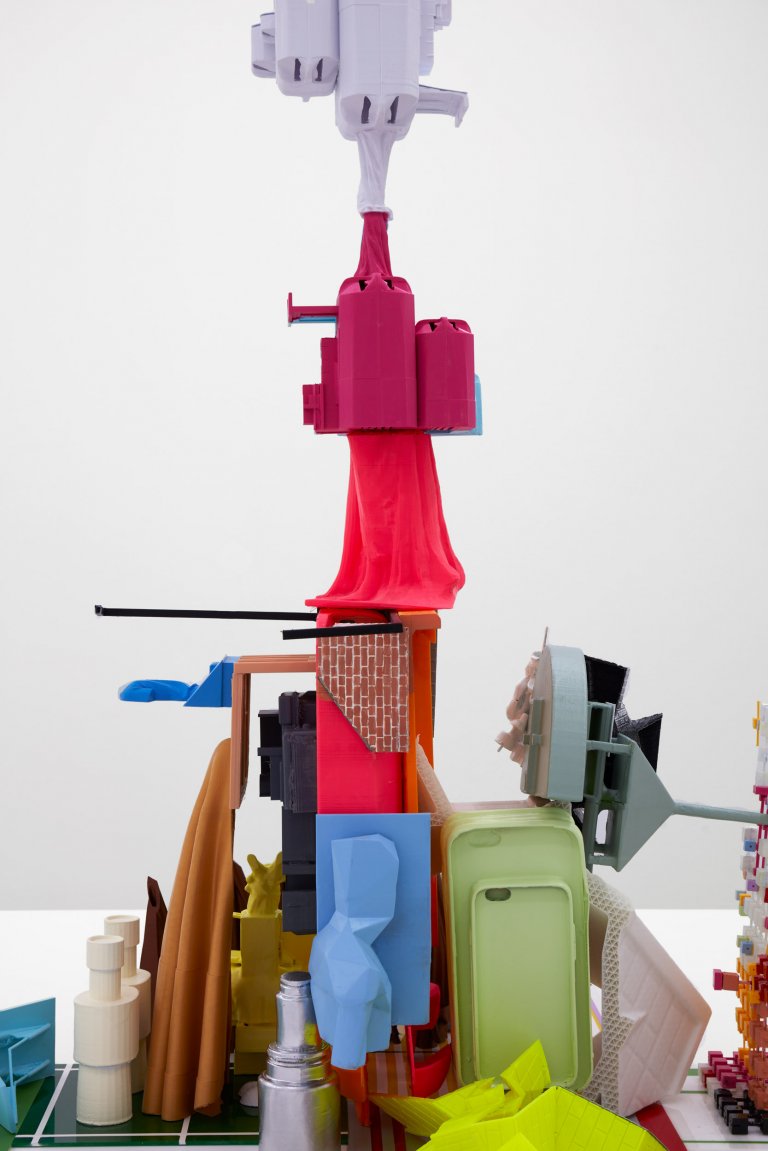
Pavilion, 2019, detail
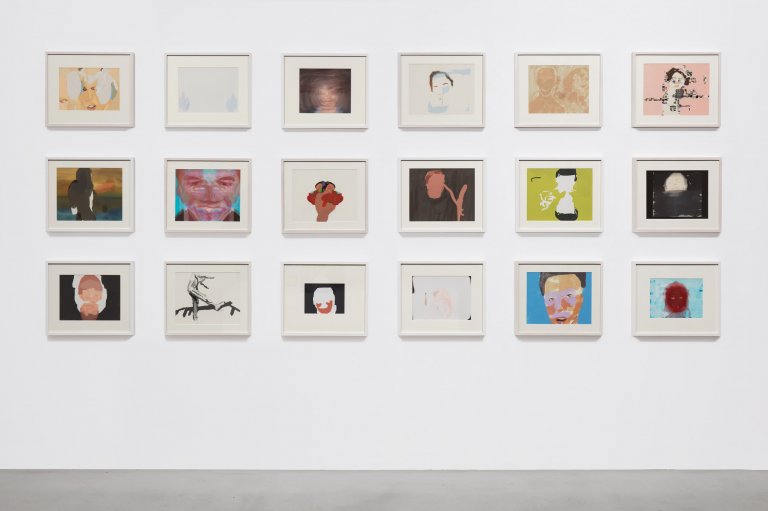
Selfies, 2019, framed prints on watercolour paper, 40.5 x 48 cm each
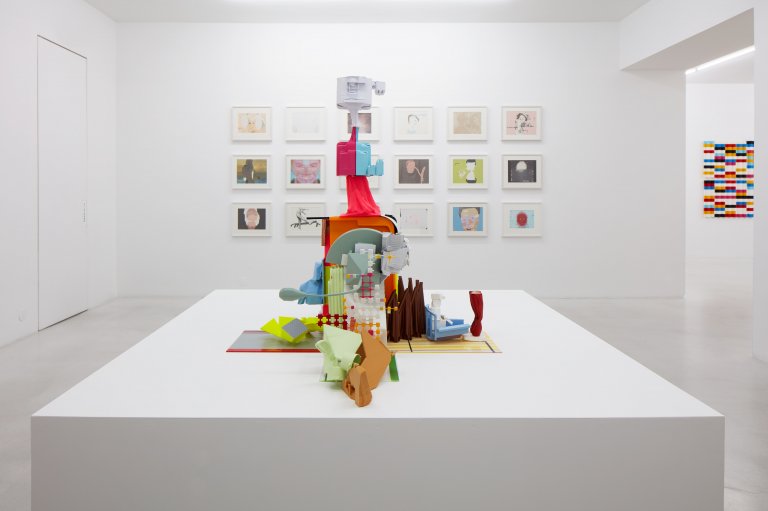
Installation view
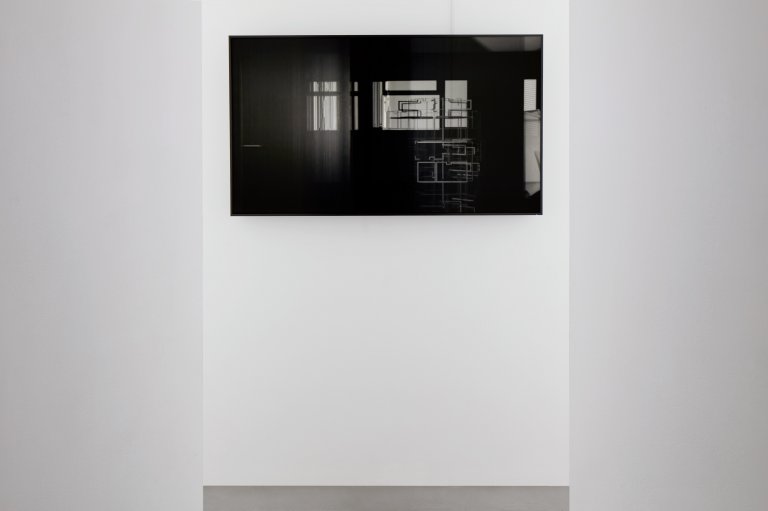
Untitled, 2019, video, 6:40 min, loop